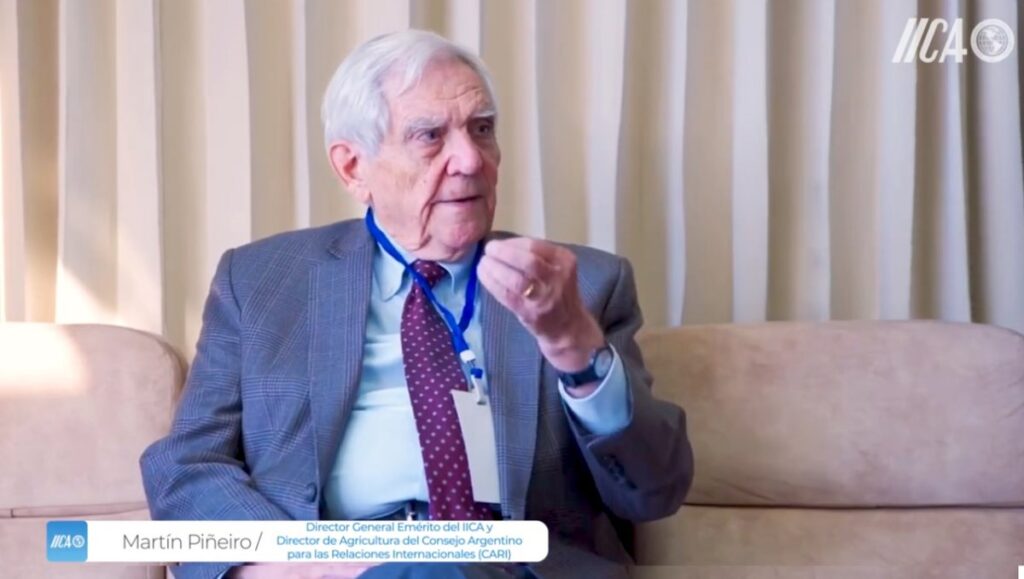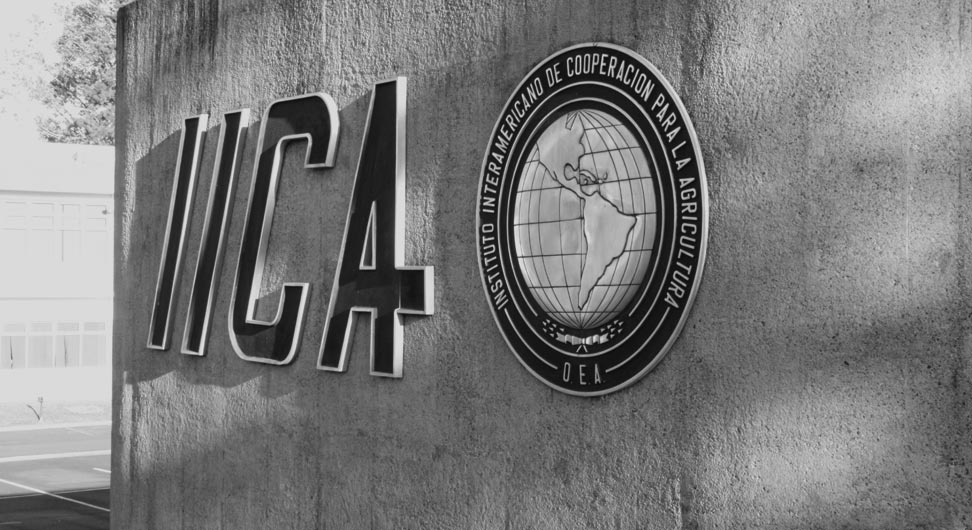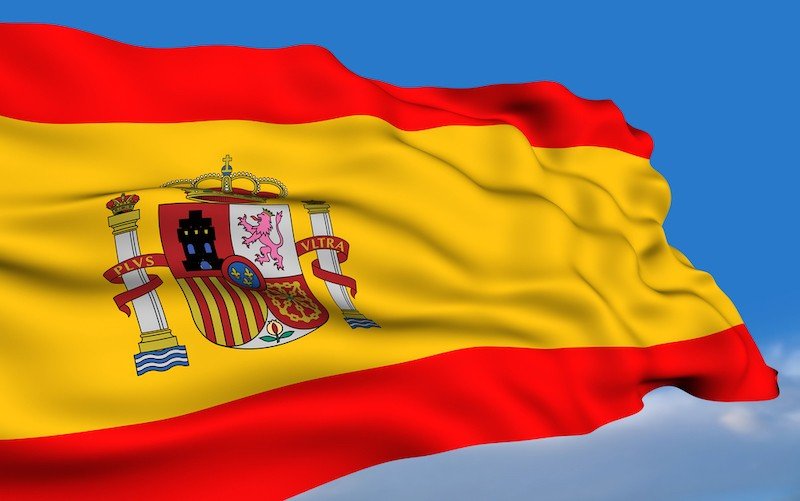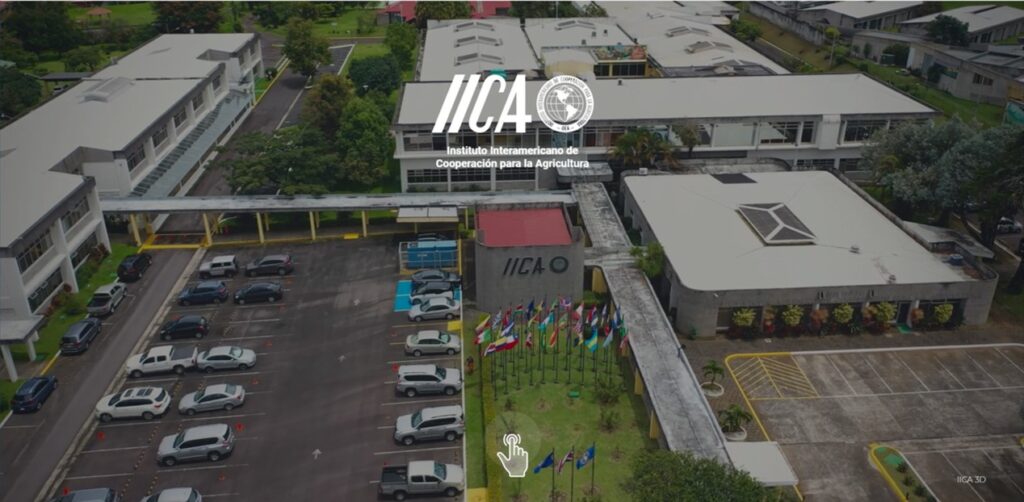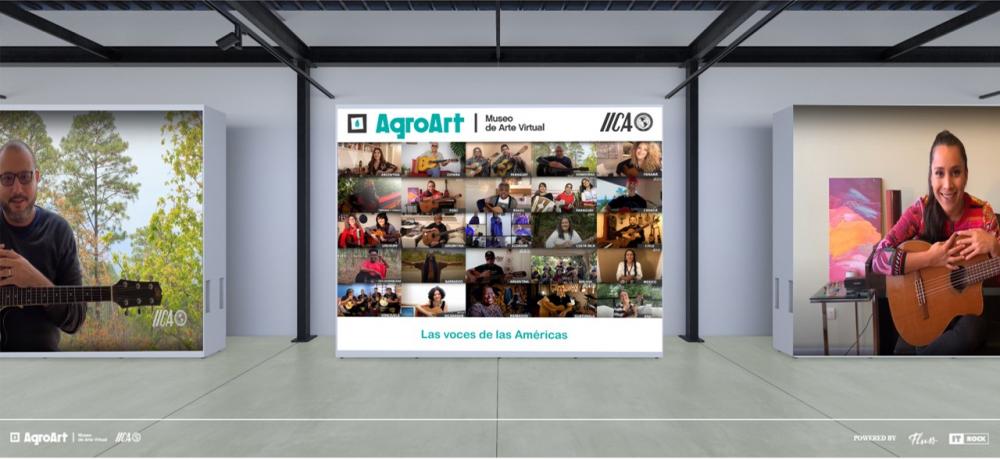Over the course of 40 years, we have become a key stakeholder in the global production of food and bioenergy. The growing demand for food around the world has once again become our passport to the future.
May 2019
Alysson Paolinelli
IICA’s Goodwill Ambassador
We are facing an undeniable fact. Brazil’s outlook for a period of at least ten years is filled with great economic challenges. Like some of our BRICS (Brazil, Russia, India, China and South Africa) partners, we will need to drive yearly increases of 6 to 8% once again. How will we achieve this objective, without sufficient financial resources? Brazil faced a similar dilemma in the 1970s when, with no foreign exchange and pressured by the growing price of oil and the importation of only 30% of the food it required, the country was forced to bet on science, technology and innovation to birth a modernized, competitive and sustainable tropical agriculture. Over the course of 40 years, we have become a key stakeholder in the global production of food and bioenergy. The growing demand for food around the world has once again become our passport to the future.
Brazil is in a hurry.
This new leap will involve overcoming obstacles that go far beyond financial aspects alone. On this occasion, we will be able to count on upwards of 500,000 highly skilled producers, who were able to transform the most degraded, infertile land the world had ever known into a breadbasket for food security. Our farming land spans close to 70 million hectares; however, only 10% of this area is irrigated.
Attempting to double food production by establishing new farming land would not be viable, given our financial context. Based on current standards and costs, the country would need to spend between BRL 5000 and BRL 15,000 (the cost of undeveloped land) to incorporate just one hectare of new, productive land.
Let’s use the sum of BRL 10,000 as an average. Cleaning, ploughing, ground leveling and fencing costs, in addition to supplies such as limestone, gypsum and phosphate, total at least BRL 6000 to BRL 7000/ha. It is also necessary to conduct a continuous process aimed at improving the physical, chemical and biological quality of soil, which takes at least five to six years to reach peak productivity levels. At present, approximate costs for these areas should total, at the very least, BRL 3000/ha, without considering the fact that we will require more tractors and tools: harvesters, vehicles, warehouses and silos (and the corresponding implements). Costs associated with housing, energy, telephony, roads and logistics will also need to be covered. Therefore, the total cost would range from BRL 20,000 to BRL 25,000/ha.
If we intend to double our harvest, we would need to spend at least BRL 1.75 billion and invest five to six years to match our current productivity level—that is, to double our harvest in order to meet the global demand for food in the coming years. We could also consider utilizing new technologies that are already available in Brazil, such as the integration of crop and livestock farming (which reduces degraded pastures), to lower estimated costs and time investments.
Our producers are competent. They fertilize and correct soils adequately, utilizing the most advanced technologies. They are able to apply Liebig’s law of the minimum. They understand that, in order to reach the highest productivity level possible, their fertilizers must contain the required amount of chemicals—namely, macroelements (N, P, K); Ca, Mg, Zn and Si; and the 143 microelements with which they are already familiar and which they adequately utilize and fully capitalize on when farming their crops.
However, we must not forget that water is perhaps the most important element in the law of the minimum; it has enabled our harvests to achieve a sinusoidal production. When there is sufficient rainfall, we achieve excellent harvests, as was the case between 2016 and 2017. On the other hand, the production of grains has fallen by 12 million tons due to insufficient rainfall.
We are losing markets, but we still help the country a great deal.
Producers who employ irrigation methods did not experience a drop in productivity. On the contrary, they benefitted from price increases during the period of relative shortage. It is worth noting that these producers have taken on this feat on their own, without any type of special support, on a surface area spanning 7 million hectares. They purchase expensive equipment at high interest rates (funding for machines and equipment [FINAME] is limited, and the associated interest rates are even higher than Brazil’s SELIC benchmark rate). Within the agriculture sector, they pay for the most expensive energy in the world.
Many of them lack access to electric power, and are therefore forced to use diesel. The fact of the matter is that they produce three harvests per year, manage to rapidly pay off their investments, and strive to expand irrigated areas.
We have more freshwater than any other country in the world. It is estimated that we possess 12 to 14% of the Earth’s fresh water resources.
However, we do not know how to adequately utilize these resources. Water-related legislation in Brazil is extravagant, and the Secretariat of Irrigation lacks prestige, given that it has been shut down four times since it was founded. We must transition from this inertia towards a much more proactive initiative. The government and the private sector must collaborate to identify ways to utilize natural resources in a more efficient manner.
Water is life. Its primary role is promoting life, wherever it is found, by quenching the thirst of human and animal populations; or playing a role in industries, agriculture, irrigation and soil in particular, on which we grow our food. Our legislation focuses primarily on the flow of water towards the ocean, its final destination. As it flows, water also generates life, through fish and other living creatures, contributing to generating hydraulic energy while also beautifying our rivers.
According to scientists, the planet’s current water supply remains the same as more than 400 million years ago. We must achieve progress in managing our water supply, learning how to produce and manage it in the most appropriate way to guarantee the survival of humans. In this regard, it is crucial to replace ignorance with science.
It does not help to focus solely on recovering riverside forests; this by itself will not solve water scarcity. We must preserve our springs, but, more importantly, we must prevent their destruction, given that springs allow for determining the condition of the corresponding water tables or aquifers. Springs should be carefully preserved, protected and managed to ensure that they are able to absorb all of the water that is collected by recharge basins. These efforts will play a key role in preserving our natural resources, which depend on those magnificent reserves from which rivers flow.
It does not make sense to demand the systemic, daily protection of resources that are not involved in spring recharge. Naturally, producers are well aware of this, given their role in managing this good called water. By working together with producers, we can establish an efficient partnership aimed at protecting and preserving recharge basins. These areas can be densely reforested to produce food, but they must not lose the rainwater they receive.
We must enforce an inflexible rule: recharge basins must not have currents. Efforts to protect water must be rational; we must establish adequate plantations by building dams and creating level curves in the land to efficiently prevent water losses due to currents. We are proposing a new concept with respect to the production, management and adequate use of water.
I have engaged in many discussions with national and foreign scientists, professors who specialize in irrigation and drainage, as well as manufacturers of irrigation equipment. They all agree that no other country has the capacity to irrigate their crops as favorably as Brazil. Some of them reference the cost of credit opportunities, equipment and energy in particular, while others note that they are unable to sell a greater number of irrigation equipment in Brazil at a lower cost. We know that, in Brazil, the lack of rural insurance has a negative impact on all of this. I asked some equipment manufacturers if they possessed more appropriate and economic credit options to meet the national demand, to which they responded affirmatively. However, when I inquired as to why it was not offered, their response was always the same: Brazil offers no guarantees to cover operating risks. There is a clear demand with respect to irrigation in the country, but FINAME has proven insufficient and the Government lacks the necessary resources. Instead of utilizing FINAME only, couldn’t the National Bank for Economic and Social Development utilize part of those resources as a “guarantee fund”? Couldn’t this fund consist of treasury bonds? Once we have solved this equation, we can begin to dream of achieving substantial progress in Brazil’s irrigated areas, which could become even larger than those in the United States, China and India. We would guarantee a highly productive first harvest, a second “Brazilian Miracle”-style harvest (with no uncertainty as to where to carry it out), and a third harvest in the region corresponding to the 22nd parallel, where our tropical climate is very unique.
Now, let’s talk about tripling our harvest for the world.
At present, irrigation affords us the same level of security that we experienced in the 70s in the Cerrados region (the world’s breadbasket), during the transformation of the planet’s most degraded biome. Irrigation would free producers from the greatest risks they currently face—the only risks that would remain would be those related to hail, floods and fires.
We depend only on defining a clear policy, not only to support irrigation on our plantations, but also to transform the manner in which we produce, manage and utilize water in Brazil.
This article is available at the following link:
https://www.forumdofuturo.org/a-irrigacao-na-visao-estrategica-do-pais/


